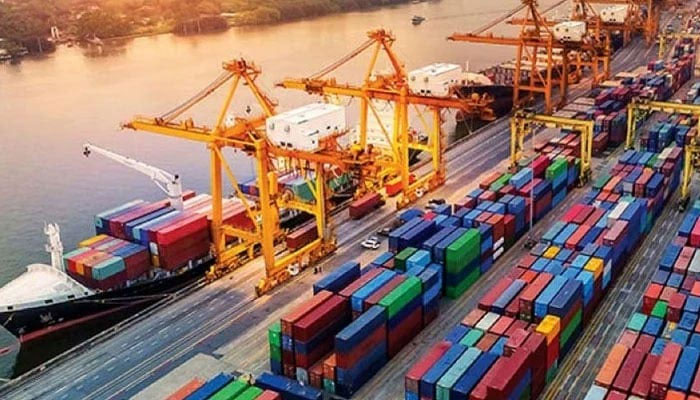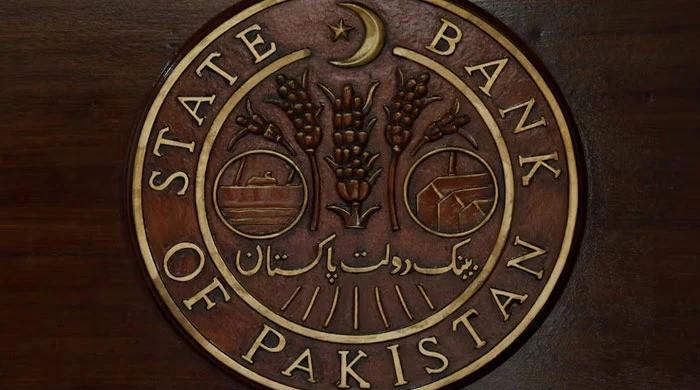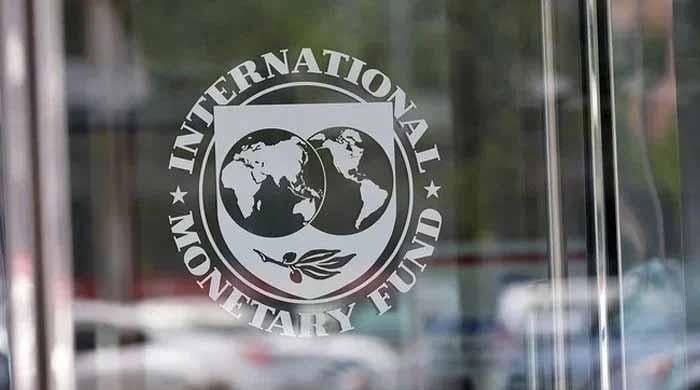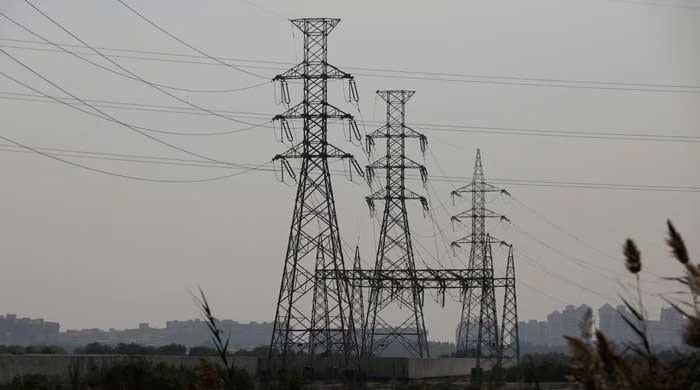Trade deficit shrinks 12.3% to $24.09bn in FY24 as exports surge
Exports increase 10.54%, reaching $30.645bn, while imports shrank by 0.84%, amounting to $54.73bn
July 03, 2024

- Total exports increase 10.54%, reaching $30.645 billion.
- Economists attribute decline to sluggish economic growth.
- Trade deficit’s endurance has pressured Pakistani rupee.
ISLAMABAD: Pakistan’s trade deficit decreased by 12.3% in FY2024, dropping to $24.09 billion from $27.47 billion in FY23, according to data released by the Pakistan Bureau of Statistics (PBS) on Tuesday.
During July 2023-June 2024, total exports, however, saw an increase of 10.54%, reaching $30.645 billion, while imports shrank by 0.84%, amounting to $54.73 billion.
In June 2024, exports of Pakistani products abroad increased by 7.3% to $2.529 billion compared to $2.356 billion in the same period last year, marking the tenth consecutive monthly rise in exports.
Imports also registered an increase of 17.43%, totalling $4.92 billion. The trade deficit in June widened by 15.13% to $2.39 billion. When compared to the previous month (May), goods exports in June 2024 fell by 10.9%, and imports remained the same. In May 2024, exports were recorded at $2.839 billion and imports at $4.92 billion.
Economists attribute the decline to sluggish economic growth and reduced activity, while the persistent export-import gap continues to strain the economy. The trade deficit’s endurance has pressured the Pakistani rupee due to increased dollar outflows.
Analysts suggest that reduced deficit reflects the impact of lower domestic demand, import management measures, and lower global commodity prices.
A smaller trade deficit in goods helped reduce the current account deficit (CAD) and in eleven months (July 2023-May 2024), totalled $464 million, significantly down from $3.76 billion in the same period last year.
However, in May 2024, CAD swung to a deficit of $270 million against a surplus of $499 million in April 2024. Apart from other factors, high interest rates have been a major driver behind sluggish Pakistani exports. Analysts say that due to high rates, Pakistani companies were unable to borrow from banks, nor were the banks themselves quick to lend money. Instead, commercial banks have shown a preference for government papers (PIBs).
Over the last several years, commercial banks have heavily invested in PIBs, giving a cold shoulder to investors and companies. Pakistan has been grappling with a persistent trade deficit since 2003, largely driven by high energy imports. Over the years, China has emerged as the country’s largest trading partner, surpassing the US in 2012.
However, despite the overall trade deficit, Pakistan recorded a surplus in trade with the US in recent times, while the largest trade deficit was observed in dealings with Beijing.
Notably, recent disruptions in the Red Sea, a critical maritime route for Pakistani trade, are significantly impacting the nation’s economy. With over 90% of Pakistan’s trade volume relying on sea routes, the blockage poses substantial challenges.
Maritime routes are vital for Pakistan, with land routes mainly serving China, Afghanistan, India, and Iran by truck, and air routes reserved for high-value and perishable goods.
According to the latest Economic Survey, In FY2023, approximately 60% of Pakistan’s exports, valued at $16.3 billion, and 30% of its imports, worth $23.2 billion, were destined for or sourced from the US, the EU, and the UK.
The delays in essential goods are disrupting supply chains, particularly affecting the large-scale manufacturing (LSM) sector. The increased freight charges threaten key exports like textiles, rice, and fruits, undermining the competitiveness of Pakistani exporters.
Shipping companies have already implemented significant hikes in freight charges, exacerbating the situation for exporters and further straining Pakistan’s trade and economic stability.









